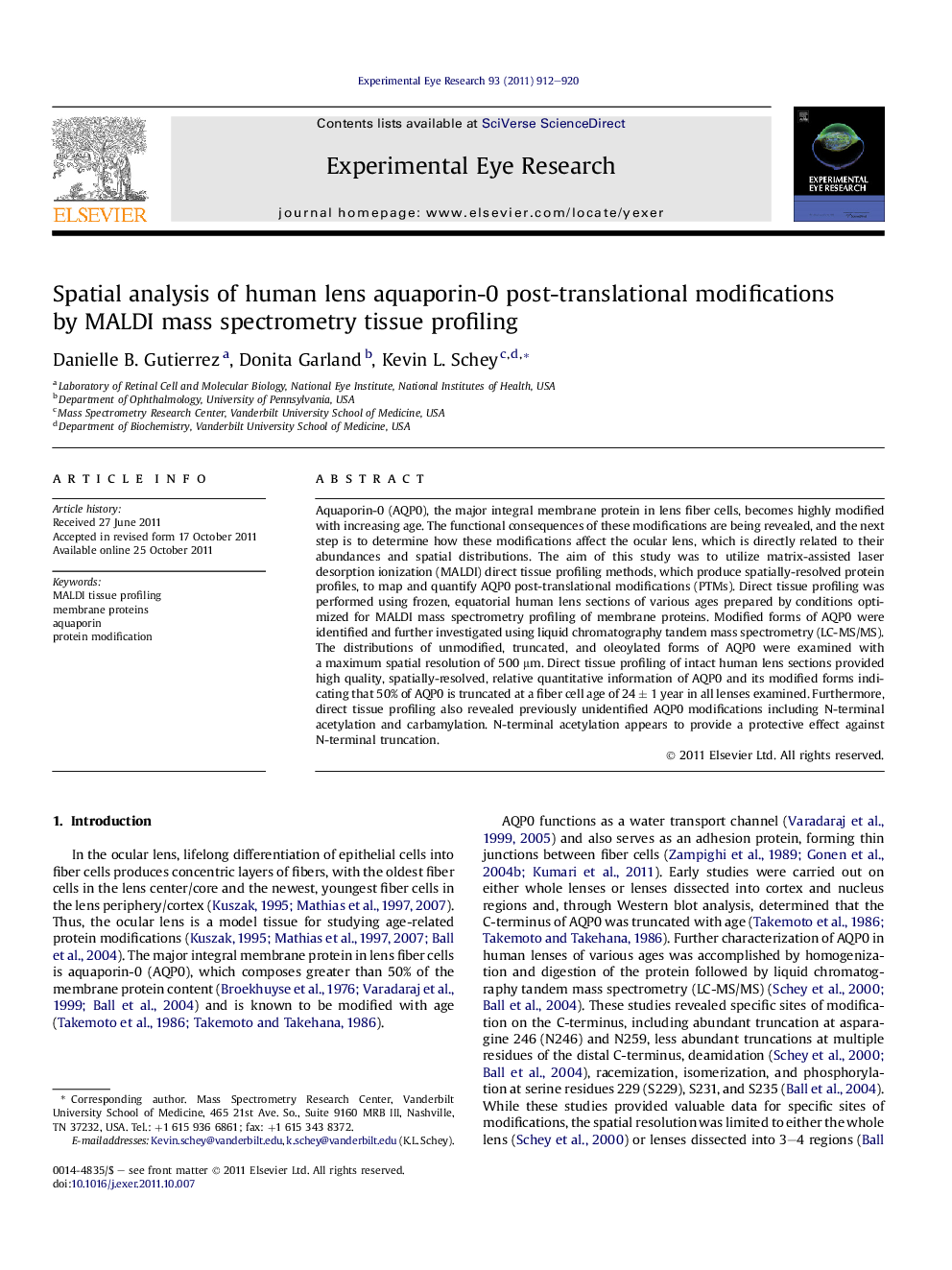| Article ID | Journal | Published Year | Pages | File Type |
|---|---|---|---|---|
| 6197418 | Experimental Eye Research | 2011 | 9 Pages |
Aquaporin-0 (AQP0), the major integral membrane protein in lens fiber cells, becomes highly modified with increasing age. The functional consequences of these modifications are being revealed, and the next step is to determine how these modifications affect the ocular lens, which is directly related to their abundances and spatial distributions. The aim of this study was to utilize matrix-assisted laser desorption ionization (MALDI) direct tissue profiling methods, which produce spatially-resolved protein profiles, to map and quantify AQP0 post-translational modifications (PTMs). Direct tissue profiling was performed using frozen, equatorial human lens sections of various ages prepared by conditions optimized for MALDI mass spectrometry profiling of membrane proteins. Modified forms of AQP0 were identified and further investigated using liquid chromatography tandem mass spectrometry (LC-MS/MS). The distributions of unmodified, truncated, and oleoylated forms of AQP0 were examined with a maximum spatial resolution of 500 μm. Direct tissue profiling of intact human lens sections provided high quality, spatially-resolved, relative quantitative information of AQP0 and its modified forms indicating that 50% of AQP0 is truncated at a fiber cell age of 24 ± 1 year in all lenses examined. Furthermore, direct tissue profiling also revealed previously unidentified AQP0 modifications including N-terminal acetylation and carbamylation. N-terminal acetylation appears to provide a protective effect against N-terminal truncation.
⺠Human AQP0 modifications were localized by direct tissue profiling mass spectrometry. ⺠Truncated and lipidated AQP0 forms were correlated with fiber cell age. ⺠50% of AQP0 is truncated by fiber cell age of 24 years. ⺠N-terminal acetylation was discovered and seems to protect against AQP0 degradation.
